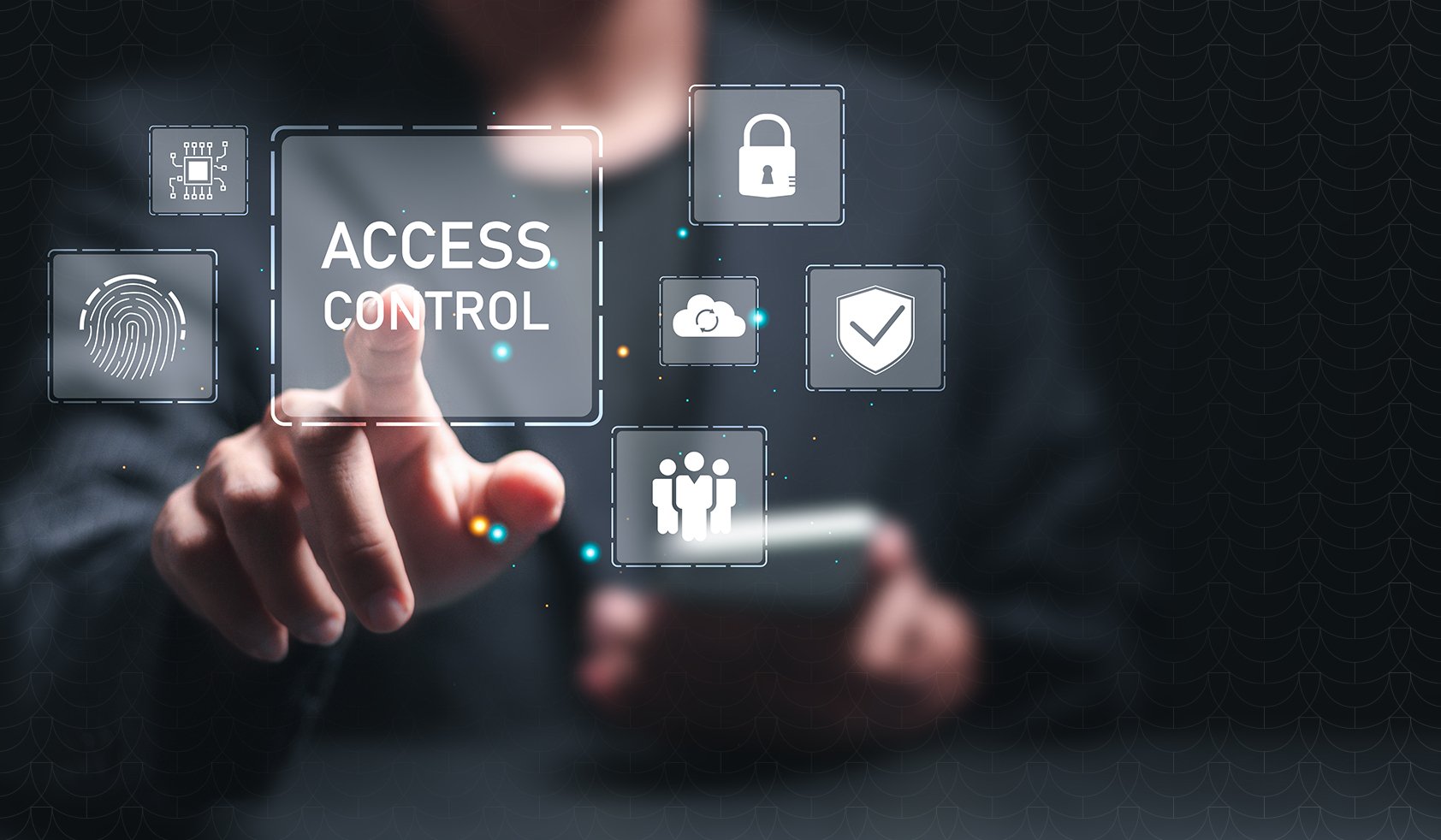Physical access control is one of the most important (and often underestimated) layers of any modern security strategy. Whether you're safeguarding a single office or managing security for dozens of locations, how you control physical entry can directly impact safety, compliance, and operational continuity.
In this guide, we’ll run through the most important types of physical access control, how they differ, and how to choose the right approach for your organization.
What is physical access control?
Physical access control systems manage who can enter or exit a building, room, or secure area. These systems range from basic keypads and keycards to advanced biometric and cloud-connected platforms.
At core, they verify identity and allow or deny access based on predefined rules. Modern systems also log activity, offer real-time monitoring, and integrate with other tools such as video surveillance, alarms, and visitor management systems.
Read more: What is Access Control? The Complete Guide 2025
Why physical access control matters in modern security
Threats have changed. So has the workplace.
Today’s organizations face a growing number of physical risks, from break-ins and unauthorized entry to insider threats and tailgating. And as buildings become smarter and more connected, so does the need for physical security that’s integrated and adaptable.
Physical access control plays a central role in:
- Protecting people, assets, and data
- Ensuring only the right individuals access the right areas
- Maintaining audit trails for compliance and investigations
- Reducing dependency on manual processes or keys
- Forming part of a layered defense strategy across physical and digital environments
Industries like healthcare, education, government, and critical infrastructure rely on robust access control to stay secure and compliant with regulations such as GDPR, HIPAA, and ISO 27001.
The 7 key types of physical access control
No two buildings or organizations are alike. That’s why it’s important to understand the main types of access control systems, and which fits your environment best.
|
Access Control Type |
Overview |
Best For |
|
Discretionary Access Control (DAC) |
Access set by admin. Flexible but less secure. |
Small teams or low-risk areas |
|
Mandatory Access Control (MAC) |
Strict classification-based control. Central authority required. |
High-security and regulated environments |
|
Role-Based Access Control (RBAC) |
Access tied to job roles. Scalable and consistent. |
Mid-to-large organize |
|
Rule-Based Access Control |
Access based on set rules like time or location. |
Time or condition-based access needs |
|
Biometric Access Control |
Uses fingerprints or facial recognition. Very secure. |
High-risk or sensitive areas |
|
Card-Based Access Control |
Cards or fobs used for entry. Convenient but can be shared. |
Offices, campuses, or ease-of-use environments |
|
Keypad/PIN Access Control |
Codes used for access. Simple but lower security. |
Small businesses or temporary access points |
Discretionary Access Control (DAC)
This is the most flexible and common model. Access rights are assigned at the discretion of the owner or administrator. It’s quick to implement and easy to manage, but it can lead to inconsistent rules and security gaps if not carefully maintained.
Best for:
Small teams or low-risk environments that need basic entry control.
Mandatory Access Control (MAC)
MAC is stricter and used where security is critical. Access is based on fixed classifications. Users can’t change permissions on their own. It’s typically found in government, military, or highly regulated sectors.
Best for:
High-security environments where access must be tightly governed and centrally enforced.
Role-Based Access Control (RBAC)
RBAC assigns access based on a person’s role within the organization. Instead of managing permissions for individuals, you define roles (e.g., IT manager, facilities team) and apply access rules to each group.
Best for:
Mid-to-large organizations that want scalable, consistent access control across departments or locations.
Rule-Based Access Control
Here, access depends on predefined rules. For example, a contractor may only access a building during business hours. Rule-based control is often used alongside RBAC to handle exceptions or add conditional logic.
Best for:
Environments where access changes based on time, location, or other conditions.
Biometric Access Control
Biometric systems use physical traits (like fingerprints, facial recognition, or iris scans) to verify identity. They offer strong protection because credentials can’t be stolen, lost, or shared.
Best for:
High-risk areas where identity certainty is essential and convenience matters.
Card-Based Access Control
These systems rely on cards or fobs to grant entry. When presented to a reader, the card sends an encrypted signal to grant or deny access. They’re familiar, affordable, and widely used, but can be shared or lost if not combined with extra controls.
Best for:
Offices, education campuses, or workplaces where ease of use is important.
Keypad/PIN Access Control
These systems use a numeric code for access. They’re simple and cost-effective, but best used in lower-security settings or when combined with other verification methods.
Best for:
Small businesses or temporary access points.
Read more: The 7 best cloud-based access control systems in 2025
How to choose the right access control system
Selecting the right model starts with understanding your risk, environment, and goals. Here’s what to consider:
Size and layout
Are you managing one building or a multi-site operation? How many access points are involved?
Number of users
Will your system need to handle hundreds of staff, rotating contractors, or external visitors?
Security level
Are you securing an open office or a sensitive data center?
Ease of use
Choose a system that’s intuitive for both admins and end users. A steep learning curve leads to mistakes - or worse, workarounds.
Scalability
Can it grow with your business? Look for systems that don’t need complete reinstallation as you expand.
Integration
Will it connect with your existing systems: video cameras, alarms, HR software?
Budget and support
Factor in total cost of ownership, including software, hardware, updates, and support.
Compliance
If you're in a regulated industry, make sure the system offers proper audit trails and data protection.
Read more: Cloud vs on-premise security: Which is right for you?
Why choose acre Security for access control?
acre Security makes it easy to put the right system in place, whether you’re just getting started or upgrading a complex estate.
We offer a complete, cloud-based platform that combines access control, visitor management, and intrusion detection in one secure system. Built for performance, simplicity, and speed, it works just as well for a single site as it does for a global network of offices or facilities.
What sets acre apart:
Cloud-native architecture
No retrofitting. Designed from the ground up for the way modern teams work.
Fast deployment
Minimal setup. No bulky hardware or complex configuration required.
Real-time control
Manage access, respond to events, and view logs from anywhere.
Mobile and biometric-ready
Use smartphones, fingerprints, or facial recognition.
250+ integrations
Connect with your existing building and security systems.
Built-in compliance
acre supports GDPR, ISO 27001, SOC 2, and more.
Trusted across sectors
We’re proud to support healthcare, education, finance, commercial real estate, and infrastructure teams worldwide.
Join the many organizations that protect their people with acre. Discover acre’s full access control suite. Or, speak to an access expert.
Conclusion
Access control is more than a lock and key. It’s the foundation of a safer, smarter organization. From role-based access to biometric identity verification, there’s a solution to fit every need.
acre Security gives you the tools to take control, stay compliant, and scale securely. Explore our full suite of access control solutions or speak to a security expert.
Get started with acre.
FAQs: Types of physical access control
What are the main types of physical access control?
The main types include:
- Discretionary Access Control (DAC)
- Mandatory Access Control (MAC)
- Role-Based Access Control (RBAC)
- Rule-Based Access Control
- Biometric Access Control
- Card-Based Access Control
- Keypad or PIN-Based Access Control
The best choice depends on your building’s risk profile, user needs, and compliance requirements.
What is the difference between DAC and MAC?
DAC (Discretionary Access Control) allows individual administrators or users to decide who has access, offering flexibility but less oversight. MAC (Mandatory Access Control), by contrast, enforces strict rules centrally.
Is biometric access control more secure than cards or PINs?
Yes. Biometric systems verify identity using fingerprints, facial recognition, or iris scans, making them harder to forge or share than cards or PINs. They’re ideal for locations where identity assurance is critical.
What type of access control is best for small businesses?
Small businesses often benefit from role-based or card-based access control due to ease of use and affordability. For even simpler deployments, keypad entry systems may be sufficient, especially when combined with audit logs or mobile alerts.
Can access control systems be integrated with other security tools?
Yes. Modern access control systems like acre’s are built to integrate with video surveillance, visitor management, alarms, HR platforms, and more. Integration enhances situational awareness and streamlines operations.
How can I choose the right access control model for my building?
Start with your business size, layout, and risk profile. Then consider:
- Number of users and locations
- Required security level
- Existing infrastructure
- Compliance obligations
- Budget and IT resources
Are physical access control systems compliant with GDPR?
They can be. Systems like acre’s are designed with data protection in mind, with encrypted data, audit trails, and role-based permissions. Always check your provider meets standards such as GDPR, ISO 27001, and SOC 2.




.png)
